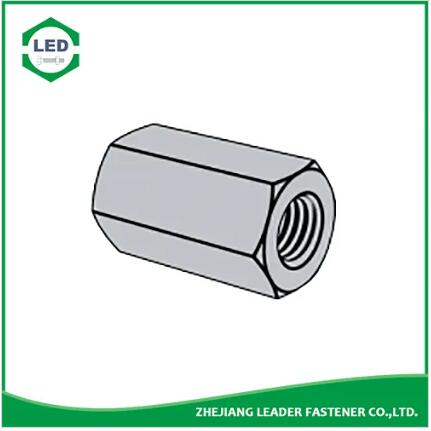How are rod coupling nuts classified or categorized within this standard?
2023-10-17
In ANSI B18.2.2, rod coupling nuts are classified or categorized primarily based on their nominal thread size and thread type (e.g., UNC, UNF, metric). These classifications help users identify and select the appropriate rod coupling nuts for their specific applications. Here's how rod coupling nuts are typically categorized within this standard:
1. Thread Size (Nominal Diameter): Rod coupling nuts are classified based on their nominal thread size, which corresponds to the diameter of the threaded rods they are designed to join. Thread sizes are typically specified in inches or millimeters, and they can range from small diameters to larger ones.
2. Thread Type: The standard specifies the thread type for rod coupling nuts. Common thread types include Unified National Coarse (UNC), Unified National Fine (UNF), and metric threads. The choice of thread type depends on the specific application and the type of threaded rods being used.
3. Length: While not always explicitly categorized in the standard, rod coupling nuts come in various lengths. Users can select the appropriate length based on the requirements of their application, ensuring that there is sufficient thread engagement for a secure connection.
4. Material and Grade: As mentioned earlier, rod coupling nuts can be categorized by the material and grade specified in the standard. Categories such as Grade A, Grade B, Grade C, or specific materials like stainless steel or alloy steel may be used to classify the nuts based on their mechanical properties and suitability for different applications.
5. Finish: The standard may specify the finish or coating for rod coupling nuts. Common finishes include plain (uncoated), zinc-plated, hot-dip galvanized, or other corrosion-resistant coatings. The choice of finish depends on the environmental conditions the nuts will be exposed to.
6. Special Features: In some cases, rod coupling nuts with special features, such as left-hand threads or other unique characteristics, may be categorized separately to ensure that users can easily identify and select the right nuts for specialized applications.
It's important for users to refer to the specific requirements outlined in the standard for the particular rod coupling nut they need. By considering factors such as thread size, thread type, material, grade, and other relevant specifications, users can select the appropriate nut to ensure a secure and reliable connection in their specific application.



